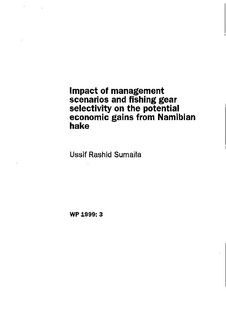| dc.description.abstract | This paper develops a model for Namibian hake, which incorporates the biology, gear selectivity and the economies of the hake fisheries in a framework that allows the analysis of fishing gear impacts on the potential economic gains from the resource. The objective is to produce quantitative results on the key variables of the fishery, namely economic rent, standing biomass and catch levels, that will support the optimal sustainable management of one of Namibia's most valuable fishery resources. Outcomes for three management scenarios are produced, (i) command; (ii) cooperative; and (ii) none-operative. For each of these, results are presented for two different assumptions of the economic setting under which the managers of the fishery operate, that is, a fully economic setting and a setting with cost-less labour inputs. As would be expected, different management scenarios and assumptions about the economic setting impact on the results derived from the model in significant ways. | |
